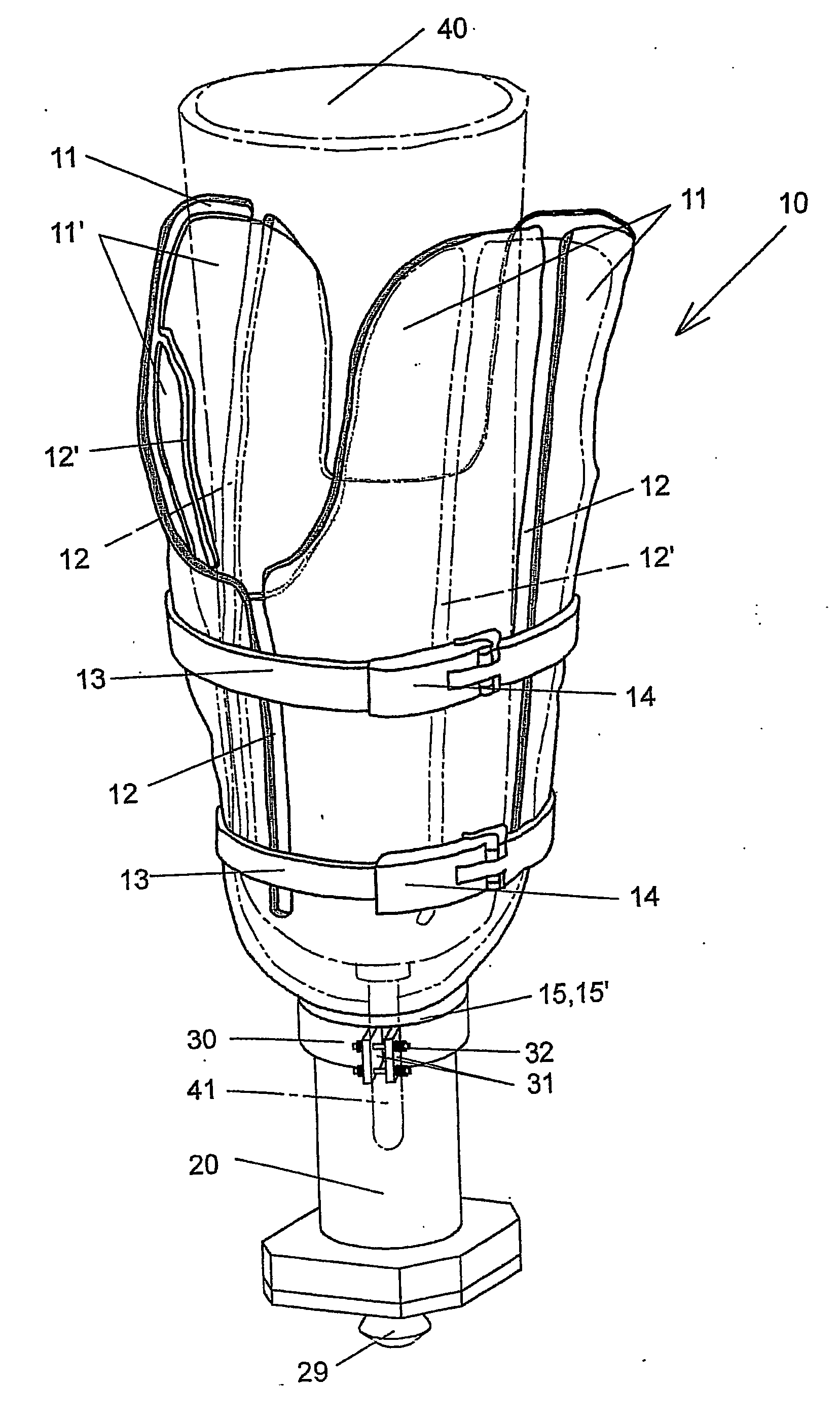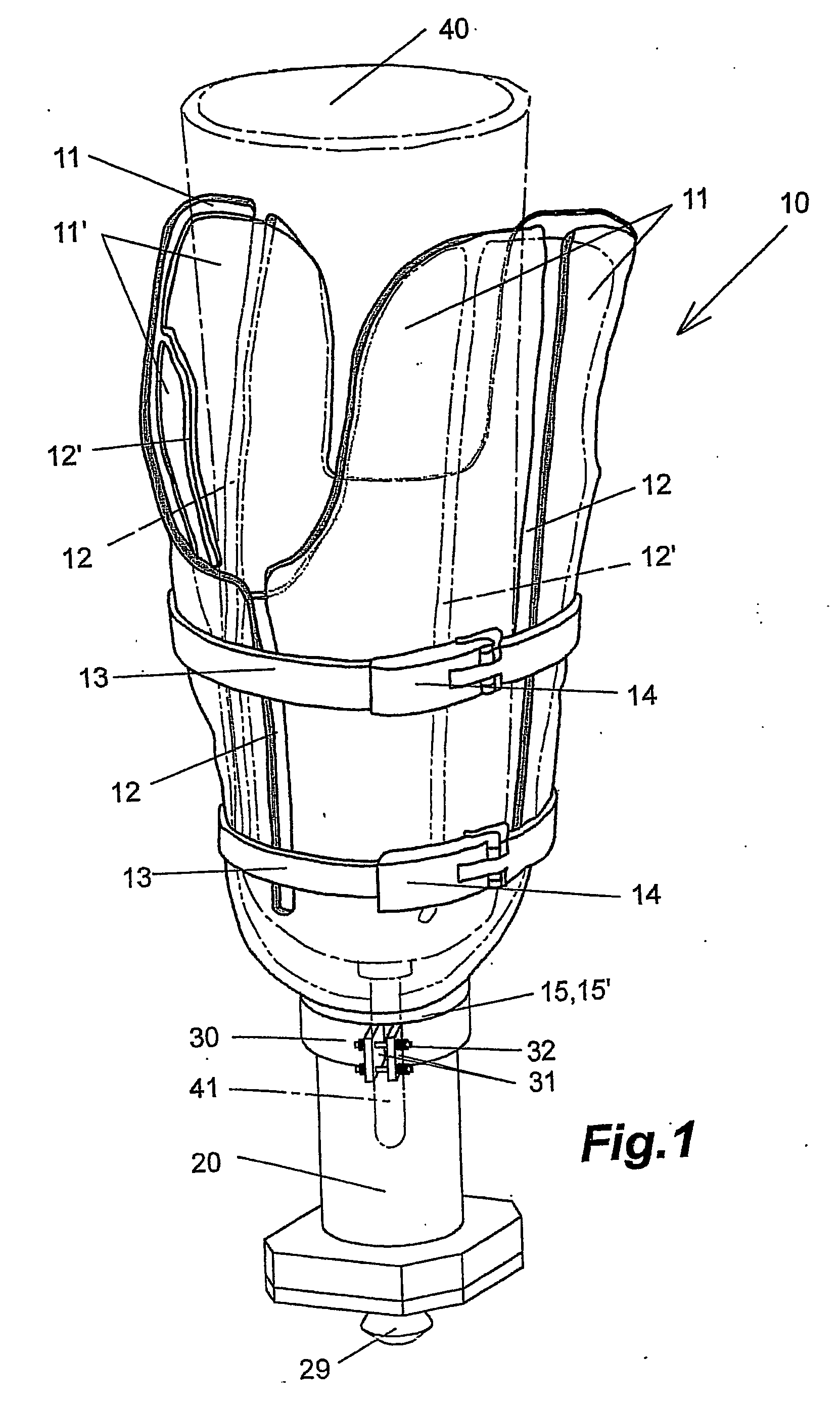Prosthesis
a technology of prosthesis and inner shell, applied in the field of prosthesis, can solve the problems of inability to achieve construction, inability to achieve effective practice, and inability to tighten the strings of the inner shell
- Summary
- Abstract
- Description
- Claims
- Application Information
AI Technical Summary
Benefits of technology
Problems solved by technology
Method used
Image
Examples
Embodiment Construction
[0012] It is therefore an object of the present invention to disclose a prosthesis as previously described, which can be fabricated simply and thanks to prefabrication can be produced in greater series, cost-efficiently, having a great solidity and fits within predetermined limits to limb stumps, whereby a diameter and length can be changed.
[0013] The problem is solved with a prosthesis with the features of claim 1, essentially comprising
[0014] a silicone liner with a coupling pin,
[0015] a prosthesis shaft
[0016] fitted to a limb stump,
[0017] provided with longitudinal slits in some areas,
[0018] and adjustable in diameter using tightening elements,
[0019] and a fastener for connecting an artificial limb with the prosthesis shaft,
[0020] the longitudinal slits are bridged over,
[0021] the prosthesis shaft has a concentric band,
[0022] inside the band, a cylindrical adaptor is height-adjustably mounted,
[0023] the adaptor
[0024] has
[0025] at its upper end a bearing surface for the limb stump...
PUM
 Login to View More
Login to View More Abstract
Description
Claims
Application Information
 Login to View More
Login to View More - R&D
- Intellectual Property
- Life Sciences
- Materials
- Tech Scout
- Unparalleled Data Quality
- Higher Quality Content
- 60% Fewer Hallucinations
Browse by: Latest US Patents, China's latest patents, Technical Efficacy Thesaurus, Application Domain, Technology Topic, Popular Technical Reports.
© 2025 PatSnap. All rights reserved.Legal|Privacy policy|Modern Slavery Act Transparency Statement|Sitemap|About US| Contact US: help@patsnap.com



